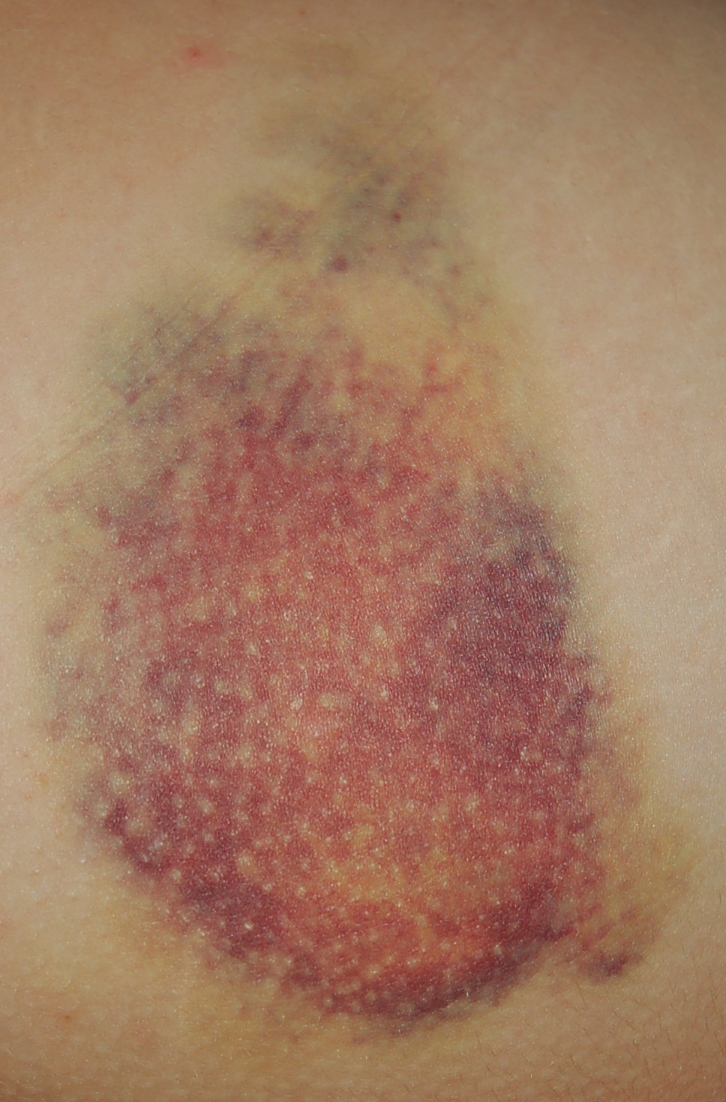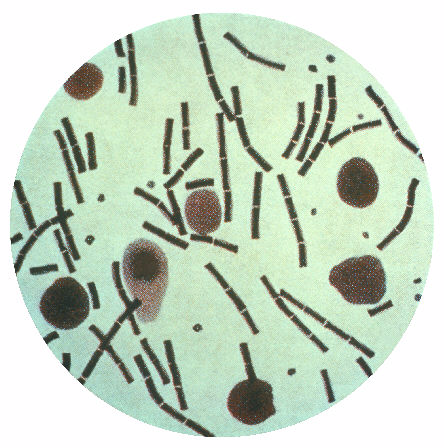Distal progressive necrosis
On Phaldorya there's a rare bacterial disease caused by the endotoxin of Clostridium Phaldoryensis. The frequency at the moment is rather low, although systems to diagnose the disease are carential too. The initial symptoms are tingling in the extremities of a limb, lameness, ischaemia of affected areas progressing to the dry gangrene of the affected limb.
Transmission & Vectors

Clostridium Phaldoryensis is a bacterium that lives as a commensal in the gastrointestinal tract of many herbivores, but the acidic pH in this area prevents the formation of endotoxin, so it is not usually pathogenic in these species. Lacerocontact wounds contaminated by spores of the bacterium, which are a resistant form in presence of oxygen, are the main cause of disease.
Causes
Once the spore enters the body in a poorly oxygenated area or lesion, the bacterium begins to replicate and produce the endotoxin that prevents inactivation of the complement system, causing focal oedematous lesions that compress the vessels and cause ischaemia in the surrounding areas. Incision of a contaminated lesion may predispose to further contamination of the environment and instruments used, if not cleaned with an acidic substance.
Symptoms
The bacterium or spore enters the organism through a lacerated wound, which can sometimes be as tiny as the puncture of a contaminated rose thorn. This is followed by a prepatent period of about five days in which the toxin is produced and spreads in the peripheral subcutaneous tissue. At this point the victim will begin to feel itching and tingling of the affected areas, and an experienced eye will notice redness and swelling. At this stage the subject is often struck by fever, even very high, and can sink into delirium; this however resolves spontaneously in the more advanced stages of the disease, which are often a more critical phase of the illness. If ignored, the disease will lead to the inability to use the affected limb, which will gradually turn dark and necrotic.
Treatment
The incision and letting of blood and serum from the original wound prevents the formation of the toxin and is the ideal prevention of the development of symptoms. If the disease is counteracted in the early stages of development with systems that improve the local circulation, such as ointments, bloodletting, alternating hot and cold compresses or a Slow poisons spell, it is possible to slow down the development of the disease, which can be effectively counteracted by a Cure diseases spell followed immediately by a Remove poisons spell. When the affected limb loses function, it is possible to regress the disease to the previous phase with a Heal spell, but this requires a cure and poison removal spell to prevent the symptoms from recurring. In the terminal stages the condition can only be recovered with a regeneration ring or a Wish spell.
Prognosis
Given the limited medical knowledge available in Phaldorya, the prognosis is often poor and will usually lead to the amputation of a limb or worse, especially as it will often occur far from large cities reducing the chances of early treatment. Early intervention by a cleric with medical expertise is perhaps the best hope for those who contract the disease.
Sequela
If the infection and toxin are not eliminated from the patient's body, even with effective local therapy the symptoms will recur. The disease can recur in patients who have already been amputated, if they are exposed to the bacterium or toxin again.
Prevention
The main prevention is to use a sharp, clean blade to cause the contused wounds to bleed, as the oxygen in the blood will prevent the production of the toxin. Exposure to an aggressive acid also prevents the disease from developing, but often produces equally undesirable consequences.
Epidemiology

Systemic distal necrosis is caused by a toxin produced by Clostridium Phaldoryensis, a bacillus about 2 μm long, Gram positive, facultative anaerobic, acapsulated, motile and sporogenous. The latter property accounts for the ability of this bacterium to remain in hostile environments (soil, metal) for years without losing its ability to sporulate. The spore is able to resist boiling for 15-45 minutes, drying and curing spells, which will resolve the infection but will not remove the spores and toxins from the environment. The spores are, however, inactivated by humid heat. Wounds contaminated with soil, wood and metal fragments, especially if deep or lacerated, provide the ideal environment for the transformation of the spore into the vegetative form capable of producing the toxin, ischaine. The toxin causes an impediment to the lysis of complement elements, resulting in a constant focal inflammatory and infiltrative reaction in peripheral areas of the body, which if not counteracted will lead to progressive tissue necrosis and death of surrounding tissues.
Cultural Reception
The distal progressive necrosis, despite its rarity, is a feared condition in Phaldorya. Obviously, a condition that can affect massively the ability of the affected people to move and work is dreaded. People amputated, as a consequence of this disease or other conditions, are often outcasts in most communities and are forced to live of almsgiving. Some of them live in the long-term care area of the Ginecomium of the Blue sisters. Most people, medically trained ones included, have a poor knowledge of the condition and the approach to treatment generally progresses by trial and error. In the rural areas, where superstition is common, it is commonly indicated as The touch of Balor, suggesting that the dark area on the skin are caused by the evil influence of the king of Fomorn.





Not gonna lie, got a little lost in all the large words, (very official sounding by the way) but i did get the point that this sounds just plain bad to have. Nice job :)
I enjoyed doing a complete developed disease combining three that are present in our world. And having a scientific background I have been pulled around a bit too much...